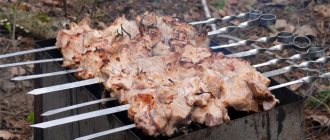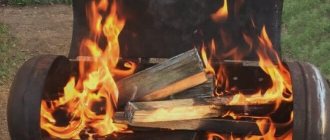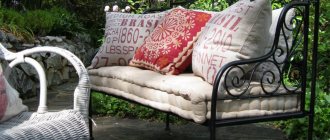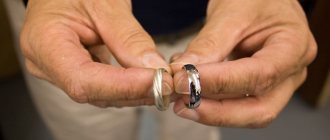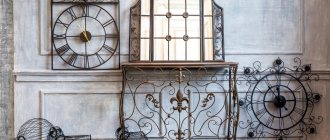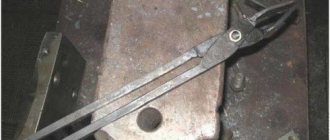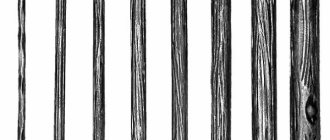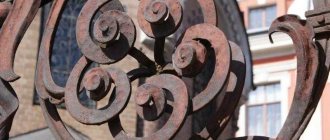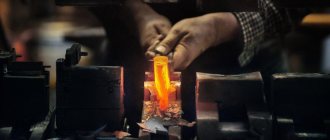How to make a barbecue with your own hands
Making a good-quality barbecue on your own is not as difficult as it might seem at first glance. All you need is to become familiar with production technology and have basic skills in working with metal.
The variety of shapes and designs of barbecues is amazing. From simple ones to entire works of art. Thanks to forging, even the simplest designs acquire an elegant appearance. With him, any vacation will become special. When you relax and enjoy nature in pleasant company, you can’t do without barbecue.
Forged masterpieces that are not subject to fashion trends
The ASK-38 company presents a range of forged products that will find a place in any interior and exterior of the yard. Our catalog includes the most popular varieties:
- stands for flowers and skewers;
- grate;
- covers and partitions for barbecues.
A flower stand is a good solution for any style of residential and commercial interior. The variety of shapes, sizes, ornate openwork transitions and curves turns these products into real works of art. Already in themselves they are an original decoration of the interior, and in combination with flowers they become a truly exclusive decor.
A stand for skewers can be an equally original addition to the interior. This product will forever solve the problem of storing barbecue accessories and can become a worthy decoration for the kitchen or dining room. Grate bars, partitions and barbecue covers cannot compete with stands in terms of elegance of execution, but this in no way detracts from their value. All these high-strength steel accessories make the process of cooking over an open fire as comfortable and safe as possible. Therefore, purchasing them from our catalog should not be neglected.
Types of barbecues
Before you start practicing, you first need to know the theory. This will help you choose the option that suits you best. There are two main types of barbecue:
Stationary. They are located in one place and are a single structure with any building. Or they are so massive that they are difficult to carry. They are almost always decorated with forging, which makes them look impressive.
Mobile. Small, portable roasters that are often disassembled. They are convenient to take with you on trips or hikes. They are rarely decorated with forging.
The best option for a dacha , where most of the summer time is spent, is a configuration that combines the best characteristics of the previous two.
Among them, ease of carrying and luxury of forged elements. Such configurations are of average size and weight, unlike stationary or mobile ones. They can be with or without a canopy. Or their functionality is complemented by space for a cauldron or countertop. In addition to light weight, ease of portability can be achieved through mounted wheels.
Basic Rules
To assemble the grill yourself, it is important to know some points. This will help make it not only beautiful, but also comfortable. And most importantly, one that makes the barbecue delicious.
Dimensions:
This is the first thing your attention is drawn to. There are size standards that have been obtained experimentally over the entire history of the existence of barbecues.
1) Width
Selected taking into account the size of the skewers and/or grill. Mostly it is about 30 cm. Six to eight pieces of meat can easily be placed on each skewer with a width of 30-35 cm.
2) Length
Standard length is 80-90 cm or meter. Each skewer is allocated 7 cm, which means that at this length 8-10 skewers will fit. As a result, in one go you can get 60-80 juicy pieces of kebab. In general, the length is selected individually, the main thing is to understand whether it is advisable. With a shorter length, you will have to cook more often and add more firewood. If it is larger, the design will turn out to be bulky.
3) Depth
Special attention is paid to this zone, since the quality of roasting depends on the depth. Usually it varies from 15 to 20 cm. There is no consensus, and it is impossible to give exact recommendations, everything is to your taste. The shallower the depth, the more fried the kebab turns out, the deeper it is, the juicier and more aromatic it is. You can make deeper models, but then the wood consumption increases. The only mandatory point: the depth must be at least 15 cm, otherwise the culinary delight will simply burn.
4) Height
For comfortable use, it is selected taking into account height. The ideal height is one at which it is comfortable to hold a bent arm. The distance is measured from the hand to the ground. On average it is 80-90 cm.
Other details:
Slots for skewers
Needed for fixing them and making them easy to turn over.
Holes in the side walls
two points of view about their necessity :
- Needed for air circulation, which promotes uniform smoldering of coals.
- In windy weather, on the contrary, they prevent this. As a result, some craftsmen consider such barbecues impractical.
Whether to do them or not can be decided based on your own preferences. If yes, then adhere to the following wishes:
- The distance between each slot is 5-7 cm;
- Location – from the bottom, 4-5 cm;
- The diameter of the holes is 10-25 mm.
Material characteristics
An important stage is the selection of material with suitable characteristics. The material itself is most often steel, sometimes cast iron. But cast iron has its own characteristics, and is less often used in self-production.
The main criterion when choosing is that for the side walls and bottom, the metal thickness varies from 2 to 6 mm. The classic version is 4 millimeters. This thickness meets all stated requirements, namely:
- Resistance to deformation;
- Maintaining temperature conditions;
- Does not burn out for a long time;
- With all this, the final weight of the structure is much reduced, which cannot be said about the 6 mm thickness.
When thinking about the characteristics of the metal, focus on how often and where exactly the roaster will be used. If you need a mobile, collapsible grill, then a thickness of 2 mm is suitable. If your priority is durability and not huge weight, then take 4 mm. For example, a box made of 3 mm steel will last at least 5 years.
The metal thickness of 4 mm is also suitable for other structural parts where it will be used. Three millimeters is also enough, but such a grill will lead. If there is a roof, then a 1.5 mm sheet of iron is taken for it. This is quite enough.
The bottom of the box can be made of thicker metal than the walls. This will increase its resistance to burnout, and accordingly, its service life. But it should be borne in mind that then the mass of the product will increase.
Metal profile for frame
If you are making a grill, for example, like in the picture, then take the following profile:
- For the roof - section 40x20 mm;
- For the main structure - 40x40 mm. The optimal solution will not be massive and not small;
- Additional details , for example jumpers in a circle - 40x20 mm;
- Other parts – 20x20 mm;
- Forged elements – square or circle 10 mm.
Other materials
When creating a barbecue, you can use not only steel, but also combine it with wood . For example, a tabletop can be made from it. During production, safety rules are taken into account, one of which is the impregnation of wood with a fire-retardant composition.
Does not fit when frying barbecue, polycarbonate . Sometimes it is used for a canopy, but in reality this is not recommended. For several reasons:
- Firstly, the material will become soggy in a short time, and its main property - transparency - will disappear and will look untidy;
- Secondly, from ash and sparks flying upward, the polycarbonate will burn through.
A canopy that allows you to cook in any weather must also be reliable.
DIY Methods
In this matter, certain points must be taken into account. Self-forging can only take place in a forge. This room may be domestic and not large in size. You will also need special tools: an anvil and a forge.
If you have all the necessary materials, you can be creative, come up with unique images and begin the creative process.
It has many analogies with the creation of a portable modification design.
First of all, you should select the appropriate material for the intended forging. To implement existing ideas, you must strictly follow the following plan:
1. Make a drawing of the future KM. It indicates all the required parameters. Here is a fairly popular drawing of a forged product. The height here is in the range of 30 – 45 cm, length – 80 – 100 cm, width – 30 – 45 cm.
2. You can set any height. But for convenient work, it is better to choose the optimal version, taking into account the user’s height, which is about 80 – 100 cm.
3. To create a roaster, a set of steel sheets is used. To build longitudinal walls, you will need two such sheets 20 x 80 cm. To build transverse walls, you should use the same number of sheets, but with parameters 20 x 40 cm. You need to create the bottom from one sheet with data 80 x 40 cm.
4. The initial stage of manufacturing may be the creation of legs. A pipe is used. 4 pieces are cut. Each length is 65 cm.
5. To make handles, you should use a profiled sheet. It is also cut into pieces. Next it is bent in accordance with the required parameters.
6. Connections are made between elements made of steel sheets: all walls and the bottom. The connection method is welding. A box is formed.
Stages of work when creating a forged barbecue
When you have decided which grill to make, you can start practicing. If you are a beginner, choose simple configurations.
1) Find a diagram or sketch on the Internet , in other open sources, or think about it yourself. All actions always begin with an image of the future product, the design and dimensions of which are indicated in the drawing.
2) Buy material, better with a reserve . To understand how many meters will be needed for forged elements, draw them with chalk on the working surface, according to the patterns in the sketch, in full size. According to the picture, measure the length with a regular rope.
3) Prepare tools . A sample list is:
- Bulgarian;
- Jigsaw;
- Welding machine;
- Profile bender;
- Cold forging machines;
- Drill;
- Roulette;
- Level;
- Metal brush.
Other consumables:
- Degreaser;
- Paint in a can, with fire-resistant, anti-corrosion properties;
- Or aerosol paint;
- Brush or roller for applying paintwork.
4) Be patient and use a bunch of swear words. No matter how paradoxical it may sound, in order to create beauty, sometimes you cannot do without them.
Instructions for making a simple barbecue
1) Marking . The details of a box with given parameters are drawn on a sheet of metal. There will be two side and end walls, one bottom. To save material, the edges of two identical parts are marked with a single line.
If you arrange the markings correctly, you can purchase a cut sheet of metal . It costs less than a whole one. The cutting can be pre-drawn on paper. This will facilitate subsequent marking directly on the material. And it will allow you to buy the appropriate sheet size.
2) Cutting . All details are cut out with a grinder. You can use other tools: plasma cutter, jigsaw.
3) Creating holes in the side walls . They are made using a drill.
4) Cutting chamfers for skewers.
5) Welding the box . For an even seam, the box is welded from the inside. For greater reliability, they are additionally boiled on the outside. If desired, reinforce the corners with metal corners. The end part can be made removable for convenience when removing ash.
6) Making legs . There can be many options. Or they are welded, then the grill will not be dismountable. Or they are fastened with bolts into pre-prepared holes. Plates are attached to the ends so that the legs do not fall into the soil.
7) Grinding . Welds, beads, burrs, and sharp edges are ground. After processing, everything should be smooth and pleasant to the touch.
 Cold forging . The forging method can be hot, but the cold one has proven itself to be more universal and less expensive when working with metal independently at an amateur level. All you need is cold forging machines. On them, the workpieces are shaped by simple manual twisting and bending. No special knowledge or skills are required; even a beginner can handle it. Normal garage conditions are suitable for the workspace.
Cold forging . The forging method can be hot, but the cold one has proven itself to be more universal and less expensive when working with metal independently at an amateur level. All you need is cold forging machines. On them, the workpieces are shaped by simple manual twisting and bending. No special knowledge or skills are required; even a beginner can handle it. Normal garage conditions are suitable for the workspace.
Snail machine - S-shaped curls: lambs, currency, comma. Machine Gnutik - Corners, zigzags, meanders, rings of small diameter. Torsion bar machine - Torsioning. And also baskets, or otherwise called lanterns.
All these elements can be used to decorate even a simple design , which will make your creation stand out among monotonous models. To do this, take a square or circle with a cross-section of 10 mm, and cut blanks of the required length from it. Curls are formed on the machines, and they are used to create an ornament, which is drawn in the sketch. The excess is trimmed, the patterns are welded together.
Then all the elements of artistic forging are welded directly to the grill, according to the drawing. Welded seams are ground and cleaned with a wire brush. The length of the workpieces is cut a little longer to avoid shortcomings. The excess will then be cut off without any problems.
Snail machine for cold forging “TR-U1”
6,000 rub.
More about the machine
10 in 1 cold forging machine “TR-U2”
from 34,000 rub.
More about the machine
9) Coloring . Before painting, the structure is degreased. Then it is painted with fire-resistant paint - a silicone-based composition is good. If the barbecue turns out to be small, aerosol paint will suffice. If it's a good size, take the paint in a can. This is cheaper than buying several aerosol cans. It is not necessary to paint, it is at your own discretion. Some craftsmen prefer to paint, others refuse, not seeing the need for it.
10) Finally, the grill is installed in the intended place, taking into account ease of use. Place it in an open space to make it easier to bring fuel and prepared food to the table. But so that the acrid smoke is not directed into the faces of vacationers. It’s a good idea to have a water source next to the barbecue. The surface on which it is installed must be flat and hard, ideally concrete or asphalt.
All steps do not have to be performed in strict order, depending on the model being assembled. For example, forged elements can be painted in advance.
But it is better to treat the profile at the beginning - clean it from rust until it shines. In a finished structure, processing is much more difficult.
Additional functionality
Canopy
Protects in any weather. From the hot sun, precipitation, during cooking. It won’t protect you from heavy rain, but in light rain you won’t have to give up barbecue.
Brazier with lid
The presence of a lid reduces frying time, protects food from insects, drying out, and accidental combustion of coals. With it, the meat is saturated with the aroma of smoke and acquires a slightly smoked taste.
Double bottom
It is characterized by an air gap, with which the process of heating the coals is uniform.
Pens
Simple collapsible barbecues can be equipped with handles to make it convenient to lift. They are either welded or fastened with bolted connections. They can be made in the form of forged curls. And then the design will become not only functional, but also beautiful.
Scoop and poker
Can be made from the same square with a diameter of 10 mm. For greater decorativeness, the handles are twisted into a spiral on a torsion bar.
Brazier with cauldron
The grill can easily be supplemented with a place for a cauldron. A ring is welded to the side or rear wall into which a rod with a holder can be inserted. There is no excess metal consumption. There is a more complicated option: the design provides for an increase in length, the stove is welded to the side. With such a model, there will be pilaf, stew, and roast on the table.
Shelf
The shelf below performs not only a decorative function, but also an applied one. Firstly, it increases the rigidity of the frame. Secondly, you can stack the firewood, and if it is damp, it will dry out quickly from the heat of the fire.
Wheels
You can use wheels from an old car, or take furniture casters. Or make it yourself from rings of different diameters, adding iron knitting needles for connection. To attach them, an axle is welded to the legs, on which the wheels are already placed.
In addition to the above, the grill can be modified with many useful things. For example, an ash box, special shelves, a pipe, handles, hooks, tongs, etc.
Specifics
Creating a barbecue already involves the use of metal. Its characteristics already include: resistance to flame and extreme temperatures. This is a very important aspect. Because when the grill is used for its intended purpose, the fire will be lit and powerful heat will be maintained to create dishes on the coals.
Some craftsmen add a roof to a wrought iron grill. This is how its service life develops significantly. A grill with a cauldron is an excellent option for a versatile outdoor cook.
Example:
Also, under such conditions, you can cook food in rain, snow, and scorching sun. The roof here becomes a powerful defense for the barbecue from these factors.
Principles of care
There are no strict rules on how to care for a barbecue, there are only general recommendations:
- After use, allow the device to cool;
- Remove ash and coal residues;
- Wipe the roasting pan with a damp cloth;
- It is possible to use detergents dissolved in water;
- To maintain the shine of the metal, you can clean it with special aerosols or rub it with wax;
- If the unit remains outdoors, coat it with an anti-corrosion compound.
With such simple care, the grill will serve you for many years.
Important: Never fill a hot fryer with water. This will lead to deformation due to sudden temperature changes.
Advantages and disadvantages
Cold forging grill has many advantages:
- unique beauty . When making them, blacksmiths show a full flight of imagination. Therefore, it is almost impossible to find two identical works;
- convenience and safety in operation . Meat on this design is fried evenly, and the product is easy and simple to care for;
- durability. The service life of such a structure is several decades. At the same time, the metal does not lose its original technical qualities and attractive appearance;
- the strength of the base , which does not need to be further strengthened. Such a structure stands securely on any ground and does not wobble during cooking;
- the opportunity to come up with a unique and exclusive design that will become the main decoration of the personal plot.
Attention : if you purchase a grill with a collapsible design, it will be much easier to clean.
Unfortunately, a grill with forging elements also has some disadvantages:
- too high cost, due to the fact that it is made according to an individual drawing and from high-quality expensive materials;
- poor tolerance to sudden temperature changes . Therefore, before washing it after use, the metal must be allowed to cool completely;
- a long and labor-intensive process. When making a barbecue with forged elements yourself, you must have blacksmithing skills;
- heavy weight But if the product is installed on a site in one place, this parameter gives it only advantages. Since the massive structure will have good stability.
Examples of barbecues
Original barbecues
From a gas cylinder or other metal barrel
Can be with or without a lid. Loops at different levels allow you to adjust the position of the skewers.
Steel cable grill
In the form of an unusual flower
For music lovers in the form of a guitar
With original holes
Produced using laser and plasma cutting.
Other creative barbecues
Projects and production
To make a barbecue grill, you need a preliminary design. All components and their parameters must be calculated in it. Standard templates are produced. You can order an original project according to your criteria.
There should be an abundance of holes in the barbecue box. They provide full draft for the heat you need. The air circulates and enters the hearth. Due to this, the fire does not go out. And the cook can prepare the required volumes of food.
The box also has slots for skewers. This way the skewers are perfectly fixed. The customer can add additional shelves to the KM order to place firewood, ready-made dishes, various utensils, etc.
